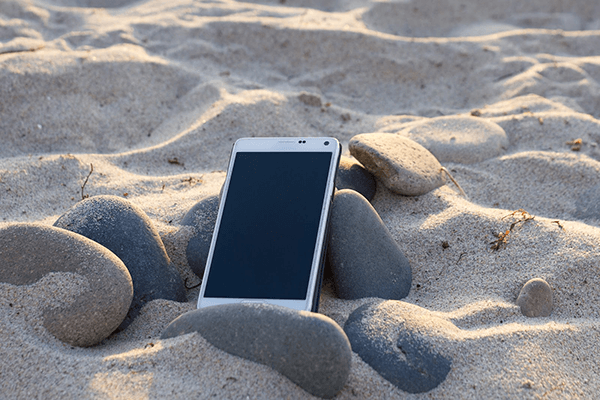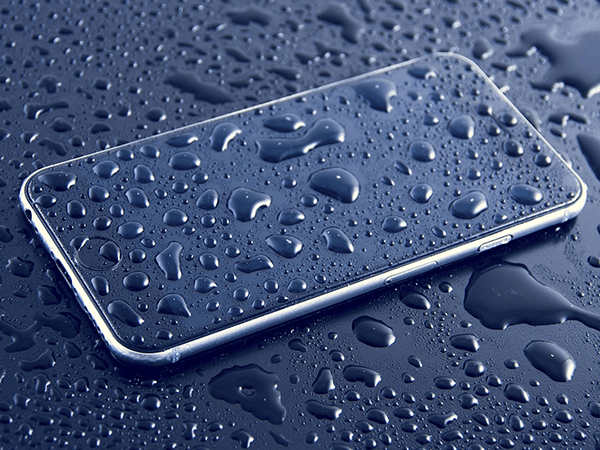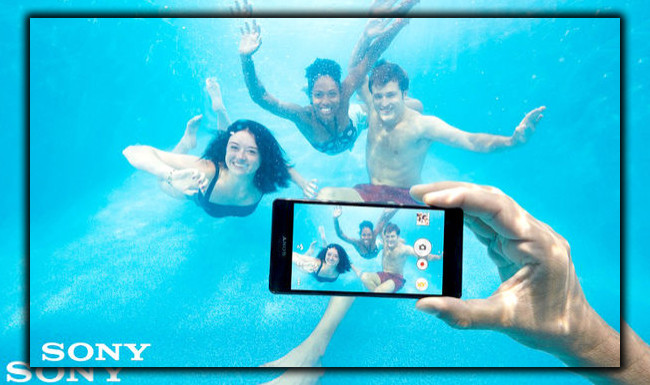IP67 vs IP68: The Key Differences & What They Mean for Waterproof Devices
| 18-06-2019 | By Moe Long
Understanding the durability and resistance of electronic devices against environmental factors is crucial when selecting the right gadget for your needs. IP ratings, such as IP67 and IP68, provide valuable information about a device's ability to withstand exposure to water and dust.
As an electronic engineer, I've had to consider IP ratings when designing and selecting components for our educational kits. Here's what I've learned.
In this comprehensive guide, we'll explore the IP rating system established by the International Electrotechnical Commission (IEC), explain the meaning behind these codes, and help you make an informed decision when choosing your next electronic device.
What are IP Ratings?
The International Electrotechnical Commission (IEC) created IP as a set of standards for defining the ability of electronic devices to survive fresh water and harsh materials, including dust, sand, and dirt.
Essentially, the IP rating system functions as a ruggedness scale with its numbering system indicating resistance to elements. The letters IP followed by two digits make up the mysterious code known as the IP rating system.
According to the IEC's official blog, the IP rating system is beneficial for both manufacturers and consumers. Manufacturers can offer a level of protection that is clearly defined and tested, while consumers receive a verifiable assurance of this protection. This is particularly important given that up to 20% of all phone damage is reported to occur as a result of immersion or contact with a liquid (source: IEC).
It is reported that up to 20% of all phone damage occurs as a result of immersion or contact with a liquid. That is why manufacturers claim their devices are waterproof, but what do the IP ratings they advertise actually mean? (source: IEC)
The IEC is a reputable international standards organization that I've relied on throughout my career. Their standards ensure the safety and quality of electronic devices, which is why I trust their IP rating system.
IP68 vs IP67 Codes Demystified: The First Number - Solids
In an IP code such as IP68, the first digit (0-6) refers to protection against solid materials. For example, IP2 offers protection against fingers, while IP6 provides complete dust protection.
IP5 introduces dust protection. Although complete dust exclusion is challenging, the IEC dust-resistance rating must meet specific criteria to ensure the device remains operational. IP6, however, is dust-tight, meaning complete and total dust protection.

Image Source: https://pixabay.com
The IP Rating System: The Second Number - Liquids
The second digit in the IP rating system (0-9) indicates water resistance. For instance, a rating of 7 allows for immersion in up to a meter of water for 30 minutes, while 8 provides protection from immersion in more than a meter.
Not all liquids are the same, however. The International Electrotechnical Commission assigns ratings for fresh water. Its system isn’t designed as an indicator of protection against salt water, your morning coffee, or an afternoon pint at the pub.
While IP67 or IP68-rated devices may potentially withstand temporary immersion in liquids other than freshwater, their performance in such situations is not guaranteed by the IP rating system. However, the IEC doesn’t guarantee water resistance against anything but fresh water.
Two of the current, top-of-the-range flagship phones are rated as splash, water, and dust resistant to IP67 and IP 68 respectively. The first digit following the IP shows the phone’s resistance to dust and the second to water. They both get sixes, which is the top score, indicating no ingress of dust (source: IEC).
It's worth noting that while both IP67 and IP68 ratings indicate a high level of protection against dust and water, there is a significant difference between the two when it comes to water resistance. The IEC's standards specify that a device with an IP67 rating can withstand immersion in up to 1 meter of water for up to 30 minutes, while a device with an IP68 rating can withstand immersion in more than 1 meter of water for a period specified by the manufacturer (source: IEC).

Image Source: https://pixabay.com
The IEC IP Scale: Putting it Together
Understanding the IP rating system, the IP rating system makes much more sense. An IP67 device can sustain being dropped into water up to a meter deep for about 30 minutes. Compare that to an IP68 device which boasts protection in over a meter of water for a manufacturer-specified period.
It’s important to note that, most often with phones, we’re discussing water resistance, not waterproofing. There’s a significant difference in that water waterproof suggests indefinite submersion in water versus water resistance, which implies limited exposure and submersion. With a rating of 6 on the solids scale, both IP67 and IP68 devices maintain dust resistance.
When selecting components for any electronics project, it's often necessary to consider whether an IP67 or IP68 rating is more appropriate.
IP67 vs IP68: Which Device is Right for You?
If you’re debating between an IP67 and IP68 device, you’ll be pleased to know that both devices will carry complete dust resistance. An IP67 device holds up against up to 1m of water for 30 minutes. For an IP68-rated gadget, in addition to dust resistance, you’ll benefit from full immersion in over 1 meter of water for a device manufacturer-specified period. Essentially, the difference comes down to water exposure.
For example, the Samsung Galaxy S9+ has an IP68 rating, which indicates that it is protected against submersion in 1.5 meters of water for up to 30 minutes without any additional cases or accessories. Increasingly, device manufacturers have included some form of dust- and water resistance, a welcome change. However, it is important to remember that these ratings should not encourage intentionally submerging your device in water for recreational purposes.
Previously, individuals employed techniques like placing wet phones in bags of rice to dry them after accidental water exposure. However, contemporary devices offer improved protection from water and dust, reducing the need for such makeshift solutions. Presently, numerous electronic devices such as phones and smartwatches incorporate varying degrees of protection against environmental factors.
- IP67: Dust resistance and protection against 1m of water for 30 minutes
- IP68: Dust resistance and protection against 1.5m of water for 30 minutes (may vary by manufacturer)
In my experience as an electronic engineer, understanding these ratings is crucial for choosing the right components for any project. I had to ensure that the components I selected had the appropriate IP rating to withstand the conditions they would be exposed to.
IP68 vs IPX7: What the X?
Occasionally, you might encounter an X-rating in a device description. Unlike its counterpart in the MPAA, an X-rated device doesn’t imply that it’s unsuitable for minors, instead, it merely means there’s no data available for a protection rating. An IPX7 device, for instance, may include dust protection but definitely offers up to 1m of protection in fresh water.
IP67 vs IP68 Final Thoughts
There are tons of rugged smartphones and other devices available. Broadly, you’ll find IP67 and IP68 devices, many of which come in sleek form factors such as the Galaxy S10 or Apple Watch. Devices with an IP69 rating typically have a more rugged appearance, such as the CAT S61. Understanding the IP code rating system helps to cut through marketing jargon which often throws around terms such as water-resistant, waterproof, dust-proof, and shock-proof.
In 2015, Sony released a promo photo of an Xperia device shooting underwater pictures, which prompted Sony to issue a statement warning user, “Remember to not use the device underwater.” A keen understanding of IP codes helps to understand a gadget’s rugged capabilities and limitations and demystifies marketing terms and ads showing underwater phone photography.

However, it's important to remember that these ratings are not absolute guarantees. While they provide a good indication of a device's resistance to dust and water, they don't account for all possible scenarios.
For instance, the IP rating system doesn't consider the effects of water pressure, which can vary depending on the depth and duration of submersion. Moreover, the system doesn't account for the corrosive effects of saltwater or the potential damage caused by other liquids such as coffee or soda. Therefore, even if a device has a high IP rating, it's still best to avoid unnecessary exposure to harmful elements whenever possible.
The IEC provides International Standards and conformity assessments for all electrical, electronic, and related technologies. IEC conformity assessment verifies that Standards are properly applied in real-world technical systems to guarantee safety and quality, in this way adding value to products and services (source: IEC).
In conclusion, understanding the IP rating system can be immensely helpful when choosing electronic devices, especially those that are likely to be exposed to dust and water. However, it's just one of many factors to consider. Other factors such as the device's features, performance, and price should also be taken into account. And regardless of a device's IP rating, it's always a good idea to handle electronic devices with care and protect them from unnecessary risks.

